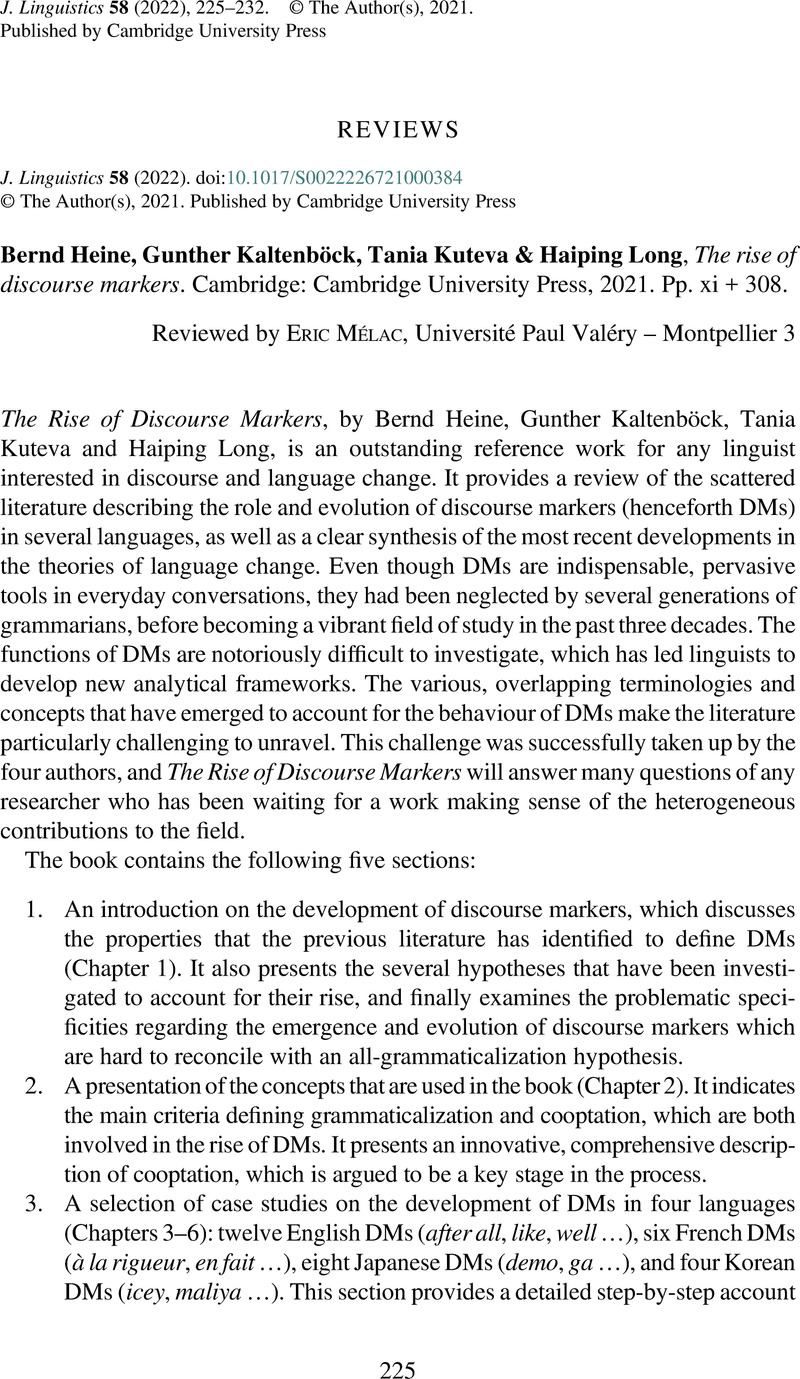No CrossRef data available.
Article contents
Bernd Heine, Gunther Kaltenböck, Tania Kuteva & Haiping Long, The rise of discourse markers. Cambridge: Cambridge University Press, 2021. Pp. xi + 308.
Published online by Cambridge University Press: 29 October 2021
Abstract
An abstract is not available for this content so a preview has been provided. Please use the Get access link above for information on how to access this content.

- Type
- Reviews
- Information
- Copyright
- © The Author(s), 2021. Published by Cambridge University Press
References
REFERENCES
Andersen, Gisle. 1998. The pragmatic marker like from a relevance-theoretic perspective. In Jucker, Andreas H. & Ziv, Yael (eds.), Discourse markers: Description and theory, 147–170. Amsterdam & Philadelphia, PA: John Benjamins.CrossRefGoogle Scholar
Bosker, Hans Rutger, Badaya, Esperanza & Corley, Martin. 2021. Discourse markers activate their, like, cohort competitors. Discourse Processes, DOI:10.1080/0163853X.2021.1924000.CrossRefGoogle Scholar
Chanet, Catherine. 2004. Fréquence des marqueurs discursifs en français parlé : quelques problèmes de méthodologie. Recherches sur le français parlé 18, 85–109.Google Scholar
Fraser, Bruce. 1988. Types of English discourse markers. Acta Linguistica Hungarica 38(1), 19–33.Google Scholar
Kaltenböck, Gunther, Heine, Bernd & Kuteva, Tania. 2011. On thetical grammar. Studies in Language 35(4), 348–893.CrossRefGoogle Scholar
Labov, William. 1966. The effect of social mobility on linguistic behavior. Sociological Inquiry 36(2), 186–203.CrossRefGoogle Scholar
Rasenberg, Marlou, Rommers, Joost & van Bergen, Geertje. 2020. Anticipating predictability: An ERP investigation of expectation-managing discourse markers in dialogue comprehension. Language, Cognition and Neuroscience 35(1), 1–16.CrossRefGoogle Scholar
Schiffrin, Deborah. 1987. Discourse markers. Cambridge: Cambridge University Press.CrossRefGoogle Scholar



